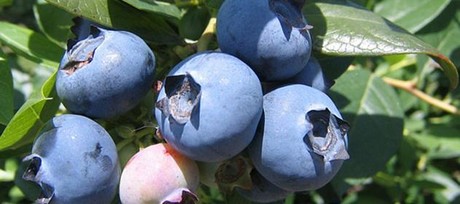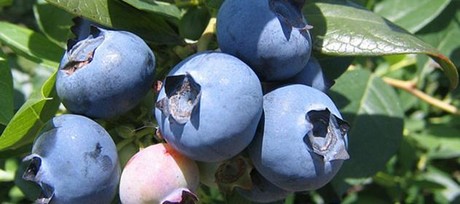 blueberry acreage reached 100,000 hectares, which represented a 123% increase compared to the year 2005, when there were 44,880 hectares, according to the business development manager of the North American firm Fall Creek Farm & Nursery, Cort Brazelton.
blueberry acreage reached 100,000 hectares, which represented a 123% increase compared to the year 2005, when there were 44,880 hectares, according to the business development manager of the North American firm Fall Creek Farm & Nursery, Cort Brazelton.In this regard, he pointed out that the increase is the result of the greater consumption levels of the so-called "superfruit" attractive for its antioxidant properties, which slow down ageing and prevent cancer.
Popularity of blueberry cultivation by countries
The country with the largest blueberry acreage is the United States, with a total of 41,083 hectares, followed by Chile with 15,136; China with 12,109; Canada with 11,244; Poland with 3,892; Argentina with 3,460; Germany with 2,162; Spain, with 1,297; Mexico and Central America with 1,290 and Australia with 865.
Worldwide production volumes in 2012
Two years ago, the worldwide production of blueberries reached 462,150,000 kilos, of which 65.2% were marketed as fresh fruit and 34.8% as processed products.
The worldwide production was divided in the following manner: North America cultivated 58%; South America, 26%; Europe, 10%; Asia-Pacific, 5%; northern and central Africa, 0.54%; and southern Africa, 0.35%.
Main exporters
The world's largest blueberry exporter is Chile, with 100,000 tonnes marketed in 2013, followed by Argentina and Uruguay (combined), with 25,000 tonnes; Mexico, 7,000 tonnes; and South Africa, 1,500 tonnes.
Regarding future prospects, Brazelton expects Chile to be marketing around 110,000 tonnes by 2020; meanwhile, Argentina and Uruguay's volumes should remain stable, Mexico should be exporting 50,000 tonnes; South Africa, 4,000 tonnes; and Peru approximately 20,000 tonnes.






